
Editor's Note: This story originally appeared on Smartest Dollar.
The economic situation since the coronavirus pandemic began has been acutely difficult for many renters. Many of the people who have been most likely to lose jobs or wages during the pandemic are also more likely to rent than to own their homes. Meanwhile, COVID-19 has driven housing prices higher for renters and home buyers alike due to high demand and low supply. As a result, the typical renter has less to spend on housing that is becoming more expensive.
But the pandemic has only accelerated trends that have already been underway in the U.S. rental market for years. According to a recent report by the National Low Income Housing Coalition, median gross rents increased faster than median rental household income between 2001 and 2018 in 45 states and the District of Columbia.
This reality is even starker when looking at different income levels. Since 1979, the wage growth of 90th-percentile earners in the U.S. (the nation’s highest-paid workers) has consistently outpaced rents, while 50th-percentile earnings more or less kept pace with rents before falling slightly behind after the last recession. For 10th-percentile earners, however, inflation-adjusted wage growth was not only lower than the growth rate for rents over the last 40 years, it was actually negative from 1979 to 2017.
A combination of data from the U.S. Department of Housing and Urban Development (HUD), the Bureau of Labor Statistics (BLS), and the Census Bureau indicates that full-time workers today would need to earn nearly $21 per hour to afford a median-priced one-bedroom apartment without spending more than the recommended 30% of income on rent. Meanwhile, the estimated hourly wage for renters nationwide is just over $13, and the federal minimum wage has been locked at $7.25 since 2009.
And the gap between actual wages and what’s needed to afford a typical one-bedroom apartment is larger in places where rent is more expensive than normal. This is particularly true in states like Massachusetts, California, New Jersey, and Hawaii, where housing supply is harder to build for geographic or policy reasons. In states like these, the average renter would need to approximately double their hourly earnings to be able to afford rental housing at current rates.
Large Metros With the Largest Renter Wage Gaps
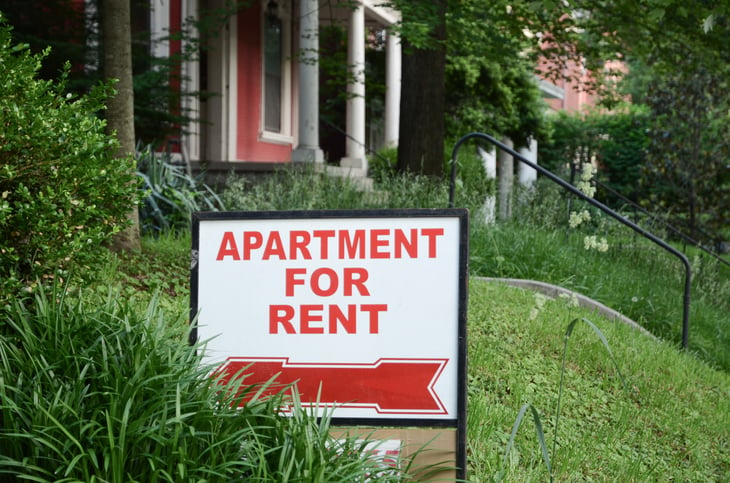
At the metro level, many of the same affordability challenges persist as well. The estimated hourly wage for renters exceeds the wage needed to afford a one-bedroom rental in only seven major metro areas with more than 100,000 residents, all of which have extremely low costs of living. At the other end of the spectrum, the renter wage gap can exceed $25 or even $30 per hour.
To identify the areas with the largest renter wage gaps, researchers at Smartest Dollar analyzed the latest data from HUD, the BLS, and the U.S. Census Bureau. Researchers used this data to calculate the gap between renters’ actual (estimated) wages and the wages they need to make in order to afford the median rent for a one-bedroom rental in each location. The renter wage gap was calculated with the assumption that the renter works full time and does not spend any more than 30% of his or her gross income on rent.
Here are the large U.S. metropolitan areas (1 million or more residents) with the largest renter wage gaps.
15. Birmingham-Hoover, AL

- Renter wage gap: -41.3%
- Median 1-bedroom rent: $939
- Hourly wage needed to afford a 1-bedroom rental: $18.07
- Estimated hourly wage for renters: $10.61
- Share of households that are renter-occupied: 32.3%
14. Providence-Warwick, RI-MA
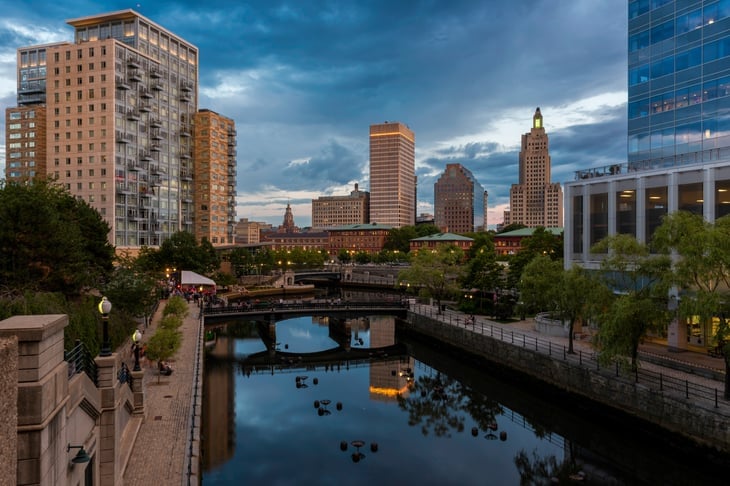
- Renter wage gap: -41.4%
- Median 1-bedroom rent: $1,031
- Hourly wage needed to afford a 1-bedroom rental: $19.82
- Estimated hourly wage for renters: $11.60
- Share of households that are renter-occupied: 38.0%
13. Chicago-Naperville-Elgin, IL-IN-WI

- Renter wage gap: -42.7%
- Median 1-bedroom rent: $1,178
- Hourly wage needed to afford a 1-bedroom rental: $22.66
- Estimated hourly wage for renters: $12.98
- Share of households that are renter-occupied: 35.6%
12. Austin-Round Rock-Georgetown, TX

- Renter wage gap: -43.0%
- Median 1-bedroom rent: $1,309
- Hourly wage needed to afford a 1-bedroom rental: $25.17
- Estimated hourly wage for renters: $14.34
- Share of households that are renter-occupied: 42.4%
11. Riverside-San Bernardino-Ontario, CA
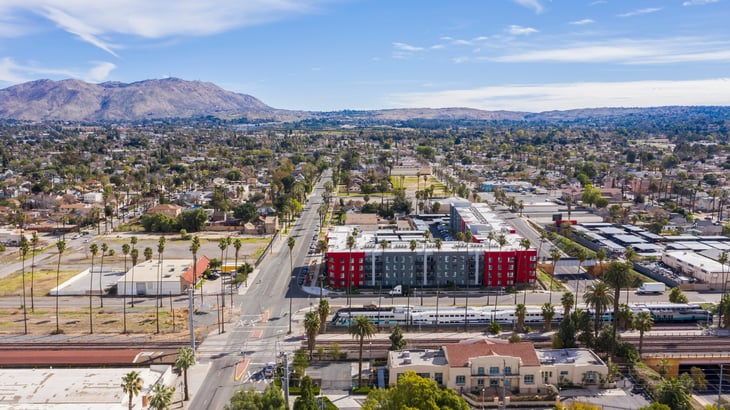
- Renter wage gap: -43.1%
- Median 1-bedroom rent: $1,199
- Hourly wage needed to afford a 1-bedroom rental: $23.06
- Estimated hourly wage for renters: $13.30
- Share of households that are renter-occupied: 36.1%
10. Portland-Vancouver-Hillsboro, OR-WA

- Renter wage gap: -43.3%
- Median 1-bedroom rent: $1,404
- Hourly wage needed to afford a 1-bedroom rental: $27.00
- Estimated hourly wage for renters: $15.30
- Share of households that are renter-occupied: 38.2%
9. Raleigh-Cary, NC

- Renter wage gap: -44.9%
- Median 1-bedroom rent: $1,134
- Hourly wage needed to afford a 1-bedroom rental: $21.81
- Estimated hourly wage for renters: $12.01
- Share of households that are renter-occupied: 34.4%
8. Orlando-Kissimmee-Sanford, FL
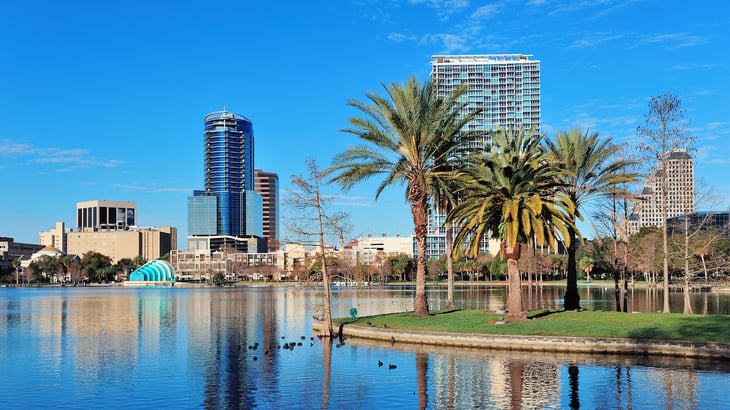
- Renter wage gap: -45.2%
- Median 1-bedroom rent: $1,227
- Hourly wage needed to afford a 1-bedroom rental: $23.60
- Estimated hourly wage for renters: $12.94
- Share of households that are renter-occupied: 38.1%
7. Miami-Fort Lauderdale-Pompano Beach, FL

- Renter wage gap: -45.2%
- Median 1-bedroom rent: $1,308
- Hourly wage needed to afford a 1-bedroom rental: $25.16
- Estimated hourly wage for renters: $13.80
- Share of households that are renter-occupied: 40.8%
6. San Diego-Chula Vista-Carlsbad, CA

- Renter wage gap: -50.2%
- Median 1-bedroom rent: $1,743
- Hourly wage needed to afford a 1-bedroom rental: $33.52
- Estimated hourly wage for renters: $16.71
- Share of households that are renter-occupied: 46.2%
5. New York-Newark-Jersey City, NY-NJ-PA

- Renter wage gap: -51.6%
- Median 1-bedroom rent: $1,784
- Hourly wage needed to afford a 1-bedroom rental: $34.32
- Estimated hourly wage for renters: $16.62
- Share of households that are renter-occupied: 49.2%
4. San Jose-Sunnyvale-Santa Clara, CA
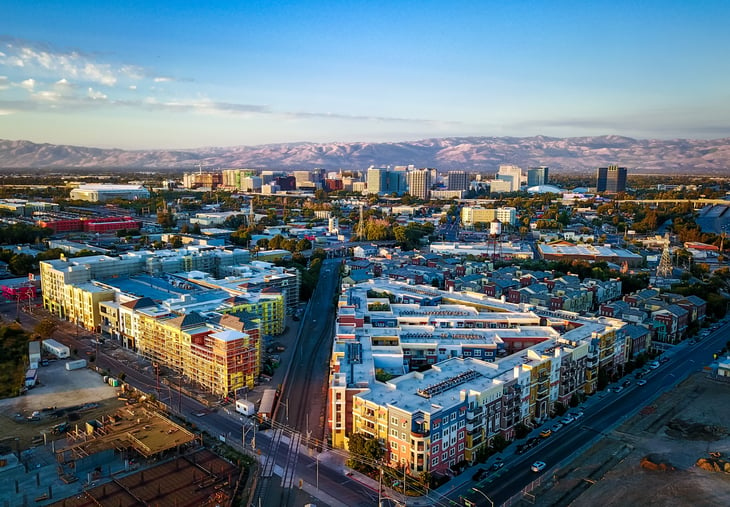
- Renter wage gap: -52.0%
- Median 1-bedroom rent: $2,663
- Hourly wage needed to afford a 1-bedroom rental: $51.21
- Estimated hourly wage for renters: $24.57
- Share of households that are renter-occupied: 44.8%
3. Boston-Cambridge-Newton, MA-NH

- Renter wage gap: -53.0%
- Median 1-bedroom rent: $1,817
- Hourly wage needed to afford a 1-bedroom rental: $34.95
- Estimated hourly wage for renters: $16.42
- Share of households that are renter-occupied: 38.5%
2. Los Angeles-Long Beach-Anaheim, CA
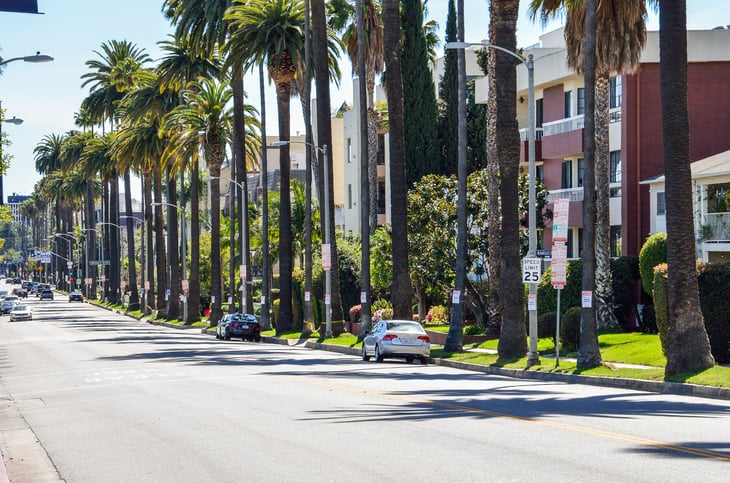
- Renter wage gap: -54.5%
- Median 1-bedroom rent: $1,814
- Hourly wage needed to afford a 1-bedroom rental: $34.88
- Estimated hourly wage for renters: $15.88
- Share of households that are renter-occupied: 51.8%
1. San Francisco-Oakland-Berkeley, CA

- Renter wage gap: -54.9%
- Median 1-bedroom rent: $2,510
- Hourly wage needed to afford a 1-bedroom rental: $48.26
- Estimated hourly wage for renters: $21.77
- Share of households that are renter-occupied: 46.0%
Methodology & Detailed Findings

The renter wage gap — the gap between renters’ actual (estimated) wages and the wages they need to make in order to afford the median rent for a one-bedroom rental — was calculated with the assumption that the renter works full time and does not spend any more than 30% of his or her gross income on rent.
Monthly rental prices for each location were sourced from HUD’s 50th Percentile Rent Estimates 2021. The prices shown are for one-bedroom apartments. An estimate for the hourly wage needed to afford a one-bedroom rental was calculated using median rent prices. To calculate the estimated hourly wage for renters, median hourly wages were sourced from the BLS’s most recent Occupational Employment and Wage Statistics (OEWS) dataset. These wages were adjusted by the ratio of renter household income to overall household income using figures from the U.S. Census Bureau latest American Community Survey (ACS) to determine the wage estimates for renters specifically. The share of households that are renter-occupied was also determined using data from the ACS.
To improve relevance, only metros with at least 100,000 residents were included in the analysis.






Add a Comment
Our Policy: We welcome relevant and respectful comments in order to foster healthy and informative discussions. All other comments may be removed. Comments with links are automatically held for moderation.